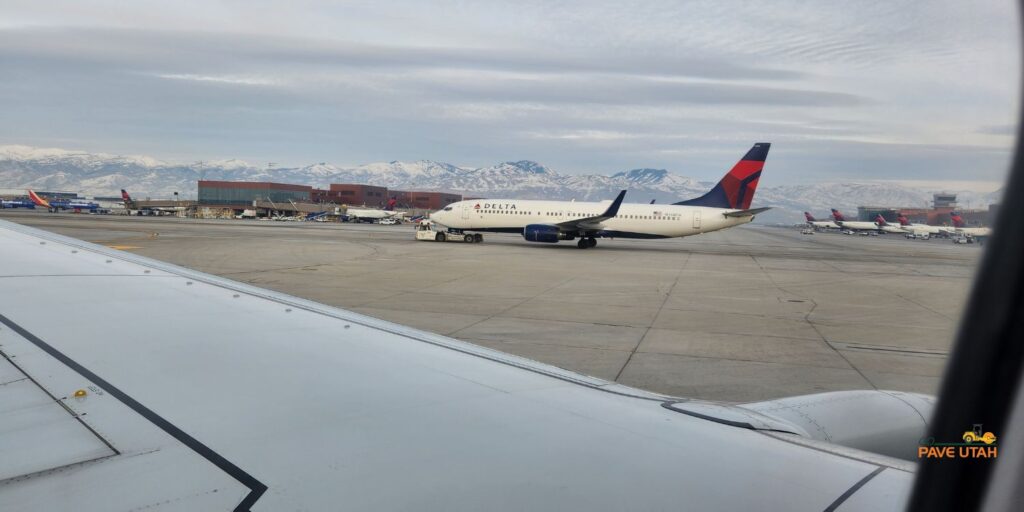
If you’ve been to the Salt Lake Airport recently, you’ve noticed the many major changes and improvements. An article by The American Society of Civil Engineers praised the project, stating the airport’s “$4.1 billion redevelopment project includes a new 909,000 sq ft terminal, two new concourses, a 3,600-vehicle parking garage, and a 7 mile long baggage conveyor system.” The SLC Airport’s website says the project aimed to replace obsolete facilities, create a flexible design for the future, make the airport more functional and efficient, and to create a more sustainable building.
Airports must spend a great deal of time and money on their runways. The runway pavement at an airport is critical. It must always be in top condition for the safety of passengers and employees and overall functionality. ScienceDirect’s International Journal of Pavement Research and Technology published an article focused on asphalt specifically for pavement surfacing. The introduction states: “Many airport runways, taxiways and aprons are constructed of flexible pavements with asphalt surfaces. The performance of the surface is critical to the safe operation of aircraft.” Airports are often paved in asphalt because of the flexibility in the surface and the overall smoothness. However, depending on usage and aircraft types, concrete can also be used, particularly in terminal areas where the aircraft stands still or taxies, in order to withstand the heavy, slow-moving weight. Most major airports are made with a both asphalt and concrete pavements, placed according to use. Engineers and designers factor in aspects such as climate, traffic, use, and material access when deciding on asphalt versus concrete for an airport project. Both materials have their pros and cons. And here is a fun fact: some locations don’t use asphalt or concrete at all. Scientists headed to Antarctica touch down on a blue ice runway, and Scotland’s Barra Airport’s runway is on the beach, which means it’s only accessible during low tide.
Because a smooth asphalt is of absolute importance for aircraft, requirements are put in place by the International Civil Aviation Organization (ICAO). According to their guideline document, commonly known as Annex 14, an airport asphalt surface must be constructed and maintained without any issues that could adversely affect the operation of an aircraft, constructed and maintained to provide appropriate friction when a surface is wet, and kept free of loose materials on the surface. This means “airport asphalt to be durable and resistant to ravelling and cracking.” Because of the complexities of an asphalt runway, it’s important the designs and specifications consist of a balance of various competing requirements.
Fracture resistance is a factor of great importance on asphalt runways that is often not as critical on typical roadways. Airport pavements must be resistant to deformation and fractures and must be skid resistant. “Importantly, the overall composition and constituent material properties both contribute to achieving these performance requirements.”
The Salt Lake City Department of Airports ensures regular maintenance is performed on our local airport, which includes asphalt overlays. The proper pavement for a particular situation can vary based on numerous factors.